Hoting Selling Veterinary/Pet/Dog/Cat/ Hair Dryer
| pictures | Â | |||
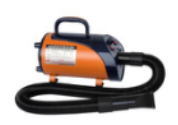 Â |
NO | HB1001 | PATENT | |
| NAME | hercules dryer |  | ||
| tempeatrure control | infitely variable |  | ||
| speed | 38m/s--60m/s | |||
| power | 220V(110V) | Â | ||
| tempeatrure control | 40-60 | |||
| soundless | 60db | |||
| power | 2800W | Â | ||
| NET/GROSSÂ WEIGHT | 5.5/6kg | Â | ||
| inSIZE | Φ160*370mm | |||
| PACKING SIZE | 45* 23*23cm (inside packing) | |||
| 47*47*47cm out cartoon,4p/carton) | ||||
| pictures | Â | |||
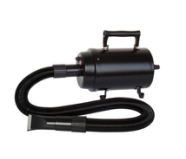 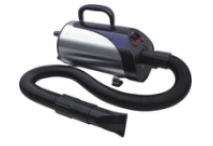 Â |
NO | HB1002 | PATENT | |
| NAME | hercules dryer |  | ||
| spec. | infitely variable |  | ||
| speed | 38m/s--60m/s | |||
| power | 220V(110V) | Â | ||
| temp. | 40-60 | |||
| sound | 60db | |||
| power | 2800W | Â | ||
| NET/GROSSÂ WEIGHT | 5.5/6kg | Â | ||
| size | 45* 23*23cm (insize) | |||
| 47*47*47cm outsize/4pcs | ||||
| pictures | Â | |||
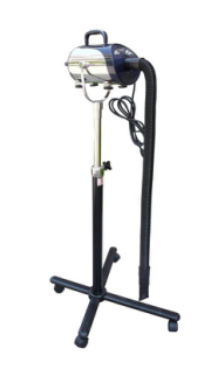 Â |
 |  |  | |
| NO | HB1007 Stainless steel | PATENT | ||
| NAME | wall mounted LED screen hercules dryer |  | ||
| speed | 38m/s--60m/s | Â | ||
| temp. | 40-60 | |||
| sound | 60db | |||
| voltage | 220V(110V) | Â | ||
| power | 2800W | Â | ||
| NET/GROSSÂ WEIGHT | 5.5/6kg | Â | ||
| size | Φ160*370mm |  | ||
| PACKINGÂ SIZE | 45*23*23cm(insize)Â | |||
| 47*47*47cm(cartoon/4pcs)Â | ||||
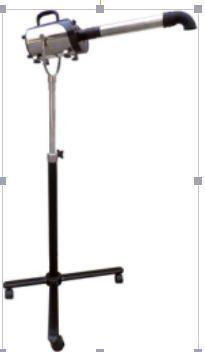 Â |
NO | HB1009 | PATENT | |
| NAME | vaterial stand hercules dryer |  | ||
| spec. | infitely variable |  | ||
| speed | 40m/s-60m/s | Â | ||
| temp. | 40-60 | |||
| sound | 60db | Â | ||
| power | 220V(110V) | Â | ||
| power | 2800W | Â | ||
| Â | Â | Â | ||
| size | Φ160*370mm |  | ||
| PACKING SIZE | 47*47*47cm (cartons/4pc)main part | |||
| 52*11*72cm  accessories | ||||
| NET/GROSS WEIGHT | 5.5kg/6kg  main part | |||
| 5.65kg/6.65kg  accessories | ||||
Submerged arc welding (SAW), as the name suggests, is conducted beneath a protective layer or blanket of flux. As the arc is always covered by the layer of flux, it eradicates any sort of radiation from the exposed arcs and also necessity of welding screens. With two variants of the process, automatic and semi-automatic, is one of the widely used welding process used in the process industry. Venus wire, one of the renowned Submerged Arc Welding Wire suppliers in India, illustrates the principle and uses of sub arc welding. Let us see them what they are:
Process:
Akin to MIG welding, SAW also employs the technique of formation of an arc between the weld joint and the continuous bare electrode wire. A thin layer of flux and slag are employed to generate protective gas mixtures and to add the required alloys to the weld pool respectively. As the weld proceeds, the electrode wire is released at the same rate of consumption and the excess flux is sucked out through vacuum system for recycling. Apart from shielding the radiation, flux layers also are highly beneficial in avoiding heat loss. The excellent thermal efficiency of this process, around 60%, is attributed to these flux layers. Also SAW process is absolutely free of spattering and does not require any sort of fume extraction process.
Operating procedure:
Alike any other welding procedure, the quality of the weld joints with respect to penetration depth, shape and chemical composition of the weld metal deposited are usually controlled by the welding parameters such as current, arc voltage, weld wire feed rate, and weld travel speed. One of the drawbacks (ofcourse methods are available to counter them) is that the welder cannot have a look on the weld pool and hence the quality of well is entirely dependent on the operating parameters.
Process parameters:
As mentioned earlier, it is only with the process parameters, a welder perfects the weld joint. For instance, in an automated process, the wire size and flux that employed that are suitable for the joint type, thickness of material, and size of the job plays an important role in deciding the deposition rate and bead shapes.
Wire:
Depending upon the requirement of deposition rate and travel speeds following wires can be selected
Twin wire
Multiple wire
Tubular wire
Metal powder addition
Single wire with hot addition
Single wire with cold addition
Flux:
Granular mixture of oxides of several elements such as manganese, titanium, calcium, magnesium, silicon, aluminium, and calcium fluoride are widely used as flux in SAW. Usually the combination is selected such that it provides the intended mechanical properties when it combines with the welding wire. It should also be noted that the composition of these fluxes play a vital role in the operating arc voltage and current parameters. Based on the welding requirement, primarily two types of fluxes, bonded and fused are employed in the process.
Uses:
Every welding method has its own set of applications, which usually overlaps due to scale of economy and quality requirement.
Although SAW can be very well employed for both butt joints (longitudinal and circumferential) and fillet joints, it has few minor restrictions. Owing to the fluidity of the weld pool, slag in molten state and loose layer of flux, butt joints are always carried out in the flat position and on the other hand, fillet joints are done in all positions – flat, horizontal, and vertical.
It should be noted that as long as proper procedures and selection of parameters for joint preparations are carried out, SAW can be successfully carried out for material of any thickness.
It can very well be deployed for carbon steels, stainless steels and low alloy steels and also few non-ferrous alloys and materials, provided the ASME code suggested combinations of wire and flux are used.
SAW finds a permanent place in heavy machine industries and ship building industries for welding heavy sections, large diameter pipes, and process vessels.
With very high utilization of electrode wire and easy automation possibilities, SAW is always one of the most sought after welding process in manufacturing industry.
Alloy Steel Submerged Arc Welding Wires
Alloy Steel Submerged Arc Welding Wires,Submerged Arc Welding Wire
Changzhou Edaweld Trading Company Limited , http://www.edaweld.com